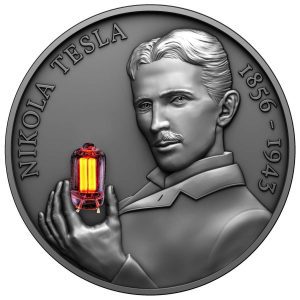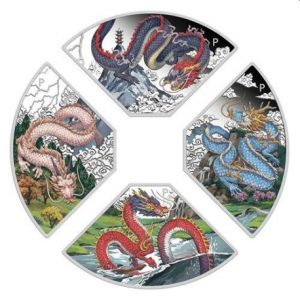Pure Gold does not rust because it is a noble metal and one of the least reactive elements. However, gold items that are not 100% pure may contain other metals like copper or silver, which can cause them to tarnish over time. These metals in gold alloys can create rust spots, but the gold remains unaffected.
What is Rust?
Rust is the reddish-brown flaky coating that forms on iron or steel when exposed to air and moisture. It’s caused by a chemical process called oxidation, where iron reacts with oxygen to produce iron oxides, mainly Fe2O3 (iron(III) oxide) and Fe(OH)3 (iron(III) hydroxide). Water speeds up rusting by helping electrons move between iron and oxygen.
Other metals like silver, copper, and nickel, often present in low-carat gold alloys, can develop rust or tarnish over time due to their interaction with environmental elements.

Red spots on gold
Pure gold, such as 24-carat or 999.9 fine gold, is nonreactive and does not rust. However, gold coins and bars can develop red spots over time. These spots are caused by copper or silver, which are often present as 0.01 parts per 1000 in bullion coins. These metals can react with oxygen or other chemicals, causing rust spots on the surface of the coin or bar.
Does Gold Tarnish?
Gold does tarnish, but not in its pure form. However, gold jewelry is typically made from alloys that contain other metals, which can react with oxygen and sulfur compounds in the air, leading to tarnishing.
The degree of tarnishing depends on the proportion of pure gold in the alloy and the presence of other metals that can corrode. Higher-carat gold (more pure gold) tends to tarnish less than lower-carat gold (more mixed metals).
| Gold Carat | Rust/Tarnish Resistance |
|---|---|
| 24K (100% pure gold) | Least sensitive- pure gold does not rust or tarnish |
| 18K (75% pure gold) | Low sensitivity due to high gold content |
| 14K (58.5% pure gold) | Moderate sensitivity, especially to tarnishing over time due to lower gold content and the presence of base metals like copper |
| 10K (41.7% pure gold) | Most sensitive to rusting and tarnishing among common gold carats due to lower gold percentage and higher base metal content |

Gold Tarnish Factors
- Exposure to chemicals like detergents, perfumes, and acidic foods
- Moisture
- Humidity
- Air pollutants
What is the difference between Tarnish and Rust?
| Aspect | Tarnish | Rust |
|---|---|---|
| Type of Corrosion | Discoloration or dullness | Reddish-brown oxide |
| Affected Metals | Silver, copper, brass | Iron, steel |
| Cause | Chemical reactions with substances in the air or on metal | Exposure to oxygen and moisture |
| Appearance | Thin layer, often removed with polishing | Reddish-brown layer |
| Impact | Generally cosmetic, can be polished off | Weakens structural integrity over time |
How does the Presence of Copper affect Gold tarnishing?
The presence of copper in gold alloys is a key factor that increases susceptibility to tarnishing of Gold, with higher copper content leading to more noticeable tarnishing over time. The tarnish resistance of gold jewelry can be improved by minimizing the copper content or using alternative alloys.
Does White Gold Rust?
While white gold does not rust, it can lose its luster and appear tarnished over time due to the wearing off of its rhodium plating and exposure to environmental factors. Proper care and maintenance can help preserve the brilliant white color of white gold jewelry.
How to Avoid Gold from Rusting or Tarnishing?
Following are the main steps to avoid Gold from Rusting or Tarnishing:
- Proper Storage: Keep gold in a cool, dry place away from direct sunlight and moisture. Use airtight containers or specialized bags for precious metals.
- Avoid Abrasive Cleaners: Avoid using abrasive cleaners or rough materials that can scratch gold surfaces. Use a soft cloth or brush designed for cleaning jewelry.
- Avoid Exposure to Saltwater: Do not expose gold to saltwater, as it can accelerate tarnishing. Remove gold jewelry before swimming in the ocean or saltwater pools.
- Avoid Direct Contact with Perfumes and Lotions: Remove gold jewelry before applying perfumes, lotions, or hair products. These substances can tarnish gold over time.
- Avoid Extreme Temperatures: Gold should not be exposed to extreme temperatures, which can affect its appearance and structural integrity.
Gold cleaning
Some people suggest using toothpaste or baking soda, but a simple wash is usually considered enough to clean real gold. However, when it comes to gold coins, especially collectible coins, it’s generally advised to avoid cleaning them to preserve their value.
To clean solid gold jewelry effectively, follow these steps:
- Fill a bowl with warm water and add a little gentle dish soap.
- Soak the jewelry in the soapy water for a few minutes.
- Gently scrub the jewelry with a soft-bristled brush, like a dull toothbrush.
- Rinse the jewelry with warm water.
- Dry the jewelry thoroughly with a soft cloth.
This method is suitable for both yellow and white gold, though white gold requires extra care due to its thin Rhodium plating. For a more thorough clean, you can use a mild dishwashing liquid in warm water, allowing the jewelry to soak before gently scrubbing and rinsing. This method effectively cleans gold jewelry without damaging its delicate surface.
Final Thoughts
Gold does not rust due to its noble and nonreactive nature, maintaining its integrity over time. However, gold alloys containing metals like copper or silver can develop tarnish or rust spots.
Tarnish affects metals like silver and copper due to chemical reactions with air or substances on the metal, while rust specifically forms on iron and steel when exposed to oxygen and moisture.





